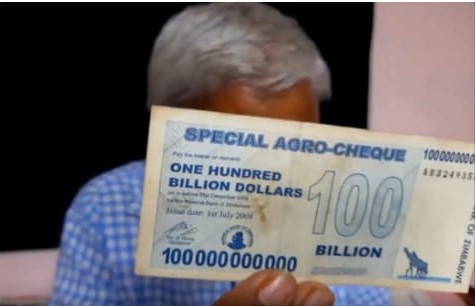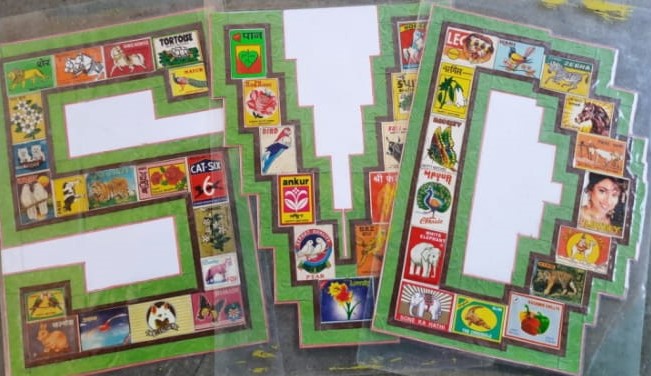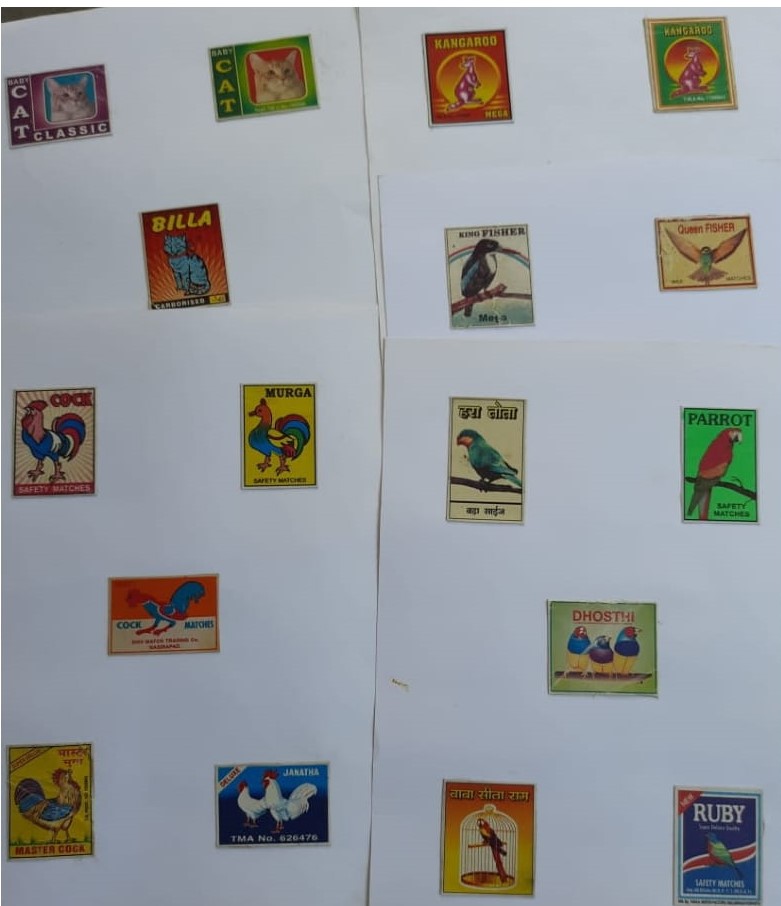Rajesh B Patil, Narendra D Deshmukh, Vinita Shrouty, and Nivedita Deshmukh
Pastime or hobbies are exercises that help us get away from everyday routine. A hobby is a voluntary activity that can be engaged in alone, at home. It helps us relieve our stress since we are doing something that gives us joy and peace of mind. Hobbies help us spend our time productively. Having a hobby that we enjoy enriches our lives. We are fortunate to have so many different options out there today. There are entire websites devoted to hobbies and interests. The best way to cultivate a hobby is to try something new. Research reveals that individuals who engage in more frequent enjoyable leisure activities have better physical and psychological functioning.
Hobbies like stamp collection, bird watching, photography, sports and music make our time worth spending and offer us information about various things. For all the benefits that hobbies provide, teachers at Shree Maa Gayatri English School (SMGES), along with a couple of mentors from outside, decided to introduce a few to their students so that they learn to spend their spare time effectively. SMGES is situated in Akot, a semi urban area of Akola district in Maharashtra.
The mentors who had hobbies such as numismatics (currency notes and coin collection), philately (collection of postage stamps), phillumeny (collection of matchbox pictures), photography and feather collection, showcased their own collections and shared stories with students about their treasures.
Numismatics
The mentor who collected coins started with 150 coins. Later on, students, parents, fellow teachers, friends, and relatives all contributed to his collection and the tally crossed the 5000 mark. His collection includes 2000 Indian coins from ancient to modern India. The oldest one is one of India’s first coins dating back to 600 B.C.E. Added to the treasure are 3000 plus coins from 200 different countries. He told students how he searched metal shops, purchased coins in scrap, searched old coin shops whenever he visited old cities, and bought commemorative coin sets in auctions. His efforts not only helped him add to his collection, but also gave him experiences that helped him grow as a person. Each coin has a story.
Once, a poor man who used to sell tea in trains gifted some foreign coins without asking for any money in return. Former students who come to visit bring coins as guru dakshina.
The mentor divided the 5000 coins under the following themes– ancient India, the Sultanate, Moghul dynasty, British India, Princely state coins and independent India. He showed the oldest and the first Indian ‘Punchmark’ coins dating back to the Buddhist period. These silver pieces carry pictures of the sun, the moon, trees, flowers, animals, vines, etc. The ancient Satvahana dynasty coins carry images of elephants while the Sikh dynasty coins are recognized by floral symbols. From these coins we learn how important and revered the environment was in those days. Modern India minted 30 coins with pictures and themes related to nature. The very first series of coins issued in 1950 confirms our faith in nature. The one, half and quarter rupee coins have the picture of a corn sheaf while the two and one and a half anna copper coins depict the picture of a standing bull. The display also had silver coins from the British era. But the most astonishing currency note that displayed was from Zimbabwe with 100000000000 (hundred Billion) dollars printed on it. Students were busy counting the zeros! He told the students that on June 30, 2011, the Indian government stopped the use of small denomination coins by law and all the coins valuing 1 paisa, 2 paisa, 3 paisa, 5 paisa, 10 paisa, 20 paisa and 25 paisa became history.

Phillumeny
The hobby of collecting matchbox pictures is called phillumeny. One of the mentor’s has a huge collection of 15000 matchbox pictures. He pasted pictures of birds, animals, insects, means of transportation, tools, deities, heroes, sports, players and even extinct species like dinosaurs and ‘Dodo’ on century paper sheets called phillumeny sheets. He also had the first Indian matchbox belonging to the pre-independence period.

Philately
The collecting of postage stamps is known as philately. Postage stamps were first introduced in 1821 in the UK. The British Empire established a chain of post offices all over the world. Soon colourful postage stamps attracted people everywhere. Commemorative postage stamps were introduced as an acknowledgement of a person’s achievements, events and historical facts and innovations. Animals, birds, plants and flowers have also been represented on stamps.
Postage stamps have been attracting collectors since their invention. It is one of the most popular hobbies worldwide. For a teacher, it serves as a window to the world.
The 2000 Indian and 15000 foreign postage stamps in the collection proved a valuable resource. These stamps carry clear, authentic pictures and correct information about natural phenomena. Used Indian stamps were collected through community support. Relatives, friends both from India and abroad contributed handsomely to enrich the exotic philately collection.


The mentor displayed her stamps on black, yellow, green, pink and purple colour sheets with different themes. For example, there was one sheet with stamps of polish cats, another one with Swiss butterflies. This mentor even roped in the students to prepare 110 such philately sheets focusing on the flora and fauna of the world.

A message
One of the mentors told the students and visiting parents how hobbies are an opportunity to learn new skills. Hobbies make us multi-skilled and creative. He said hobbies can be used as projects in schools. He advised parents to support and inculcate hobbies in their children. According to him, such projects help create interest in children and thus self-learning takes place. Many times, students can’t differentiate between a turtle and a tortoise, a crocodile and an alligator. At such times, hobbies such as stamp collection or matchbox picture collection can become learning resources. Coins, matchbox pictures, and stamps make the child inquisitive; they encourage them to ask questions. Certain hobbies can also work as teaching aids. Coins, for instance, can be used to teach history. Old coins of different denominations can also be used to teach fraction in mathematics.
Conclusion and recommendations
Hobbies can be used in daily teaching, which will help teacher inculcate social and cultural skills. Having a hobby makes our leisure enjoyable and stress-free by keeping us busy in something we enjoy. The joy of learning is the best outcome of practising a hobby.
References
https://www.ncbi.nlm.nih.gov/pmc/articles/PMC2863117/
https://www.uaex.edu/life-skills-wellness/extension-
Homemakers/Hobbies LessonGuide.pdf
Rajesh B Patil is with theSaraswati Junior College, Paras, Akola, Maharashtra. He can be reached at rajeshpatil1966@gmail.com
Narendra D Deshmukh works with the Homi Bhabha Centre for Science Education, Mumbai, Maharashtra. He can be reached atndd@hbcse.tifr.res.in
Vinita Shrouty and Nivedita Deshmukh are with Shree Maa Gayatri English School, Akot, Akola, Maharashtra. They can be reached at vinitakatpatal@gmail.com and niveditadeshmukh@ymail.com respectively.
